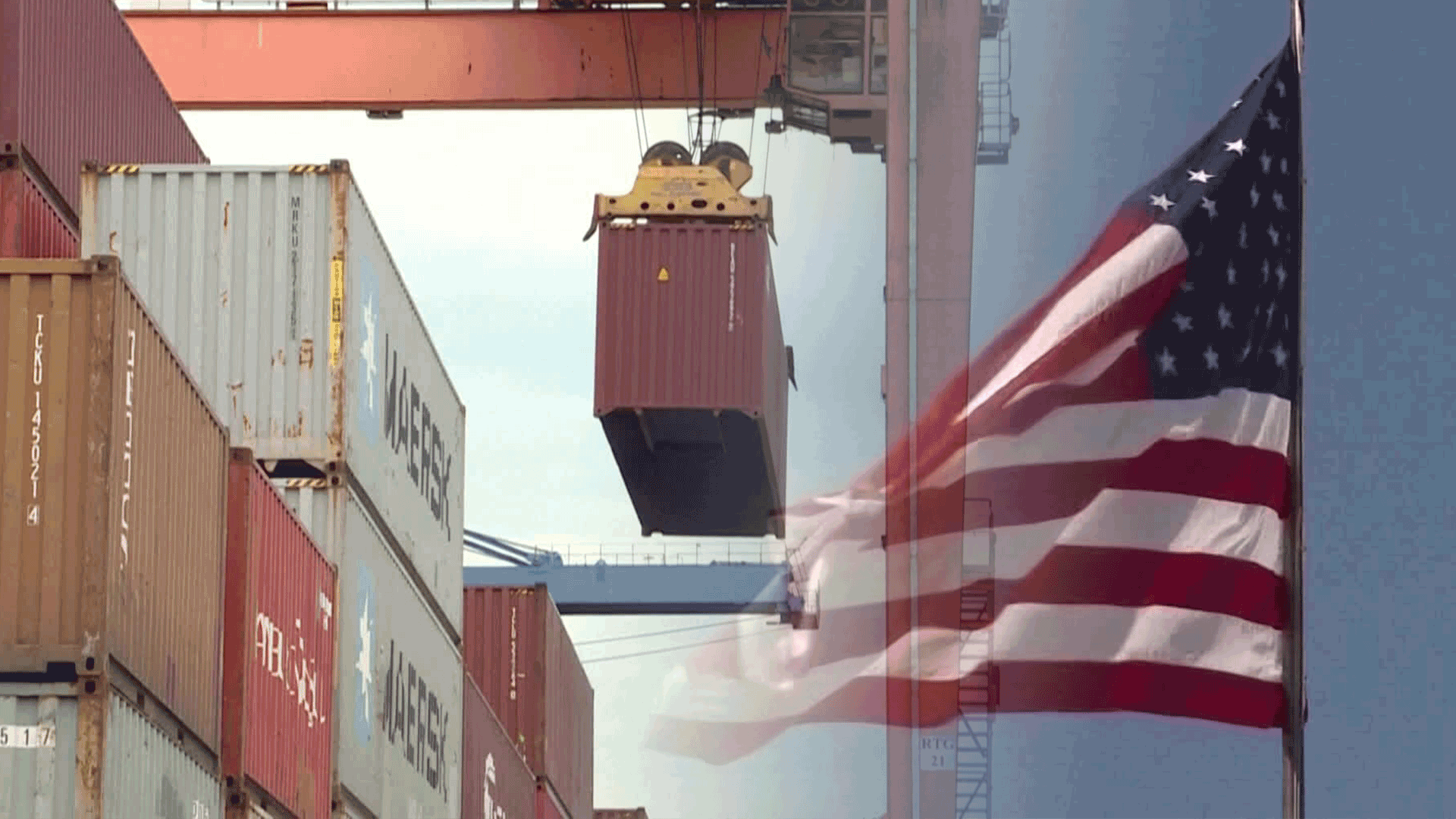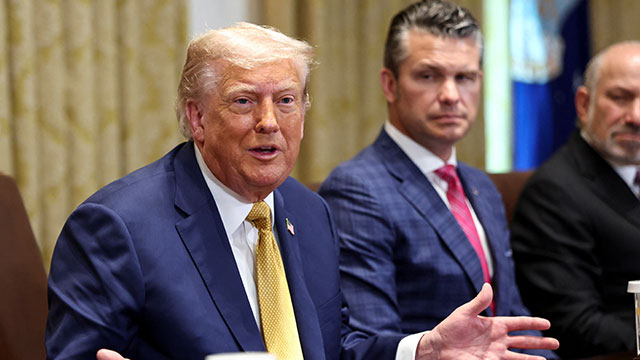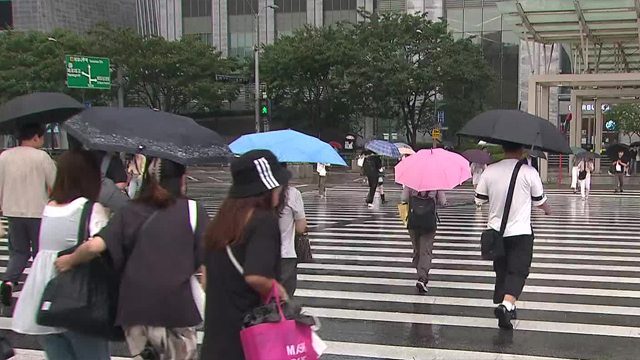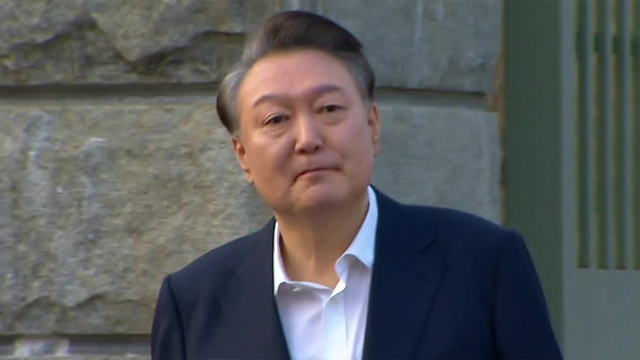[Anchor]
Trade negotiations between the United States and Vietnam have been concluded.
Vietnam has agreed to lower the reciprocal tariff, previously set at 46%, to 20%, while the U.S. secured several concessions, including a 0% tariff on American goods.
This agreement may serve as a benchmark for Korea in future trade talks.
Here’s Kim Kyung-soo reporting from Washington.
[Report]
The United States has agreed to reduce the reciprocal tariff rate with Vietnam from the 46% set in April to 20%.
In return, Vietnam will open its market to American products with a 0% tariff rate.
Vietnam is also reportedly set to purchase 50 Boeing aircraft and $2.9 billion worth of U.S. agricultural goods.
President Trump celebrated the deal, saying, “The U.S. now has total access to the Vietnamese market.”
As of April this year, Vietnam was the fifth-largest contributor to the U.S. trade deficit.
To prevent circumvention of tariffs on Chinese goods, the U.S. plans to impose a 40% tariff on products exported via Vietnam that originate from China.
This agreement offers some relief for companies like Samsung and LG, which manufacture smartphones and refrigerators in Vietnam for export to the U.S. However, the 20% tariff remains a financial burden.
The U.S. is also signaling additional deals with other countries.
There were warnings that unilateral tariff hikes could follow if no agreements are reached.
[Michael Faulkender/Deputy Secretary of the U.S. Treasury/CNBC Interview: "But for those for which negotiations have not really gone forward, I would anticipate next week an announcement of what their tariff rate would be."]
The U.S. intends to use the agreement with Vietnam as a minimum benchmark in negotiations with other Asian nations.
While Korea could refuse terms less favorable than those granted to Vietnam, it may still be expected to offer concessions at least equivalent to Vietnam's.
This is Kim Kyung-soo, KBS News, Washington.
Trade negotiations between the United States and Vietnam have been concluded.
Vietnam has agreed to lower the reciprocal tariff, previously set at 46%, to 20%, while the U.S. secured several concessions, including a 0% tariff on American goods.
This agreement may serve as a benchmark for Korea in future trade talks.
Here’s Kim Kyung-soo reporting from Washington.
[Report]
The United States has agreed to reduce the reciprocal tariff rate with Vietnam from the 46% set in April to 20%.
In return, Vietnam will open its market to American products with a 0% tariff rate.
Vietnam is also reportedly set to purchase 50 Boeing aircraft and $2.9 billion worth of U.S. agricultural goods.
President Trump celebrated the deal, saying, “The U.S. now has total access to the Vietnamese market.”
As of April this year, Vietnam was the fifth-largest contributor to the U.S. trade deficit.
To prevent circumvention of tariffs on Chinese goods, the U.S. plans to impose a 40% tariff on products exported via Vietnam that originate from China.
This agreement offers some relief for companies like Samsung and LG, which manufacture smartphones and refrigerators in Vietnam for export to the U.S. However, the 20% tariff remains a financial burden.
The U.S. is also signaling additional deals with other countries.
There were warnings that unilateral tariff hikes could follow if no agreements are reached.
[Michael Faulkender/Deputy Secretary of the U.S. Treasury/CNBC Interview: "But for those for which negotiations have not really gone forward, I would anticipate next week an announcement of what their tariff rate would be."]
The U.S. intends to use the agreement with Vietnam as a minimum benchmark in negotiations with other Asian nations.
While Korea could refuse terms less favorable than those granted to Vietnam, it may still be expected to offer concessions at least equivalent to Vietnam's.
This is Kim Kyung-soo, KBS News, Washington.
■ 제보하기
▷ 카카오톡 : 'KBS제보' 검색, 채널 추가
▷ 전화 : 02-781-1234, 4444
▷ 이메일 : kbs1234@kbs.co.kr
▷ 유튜브, 네이버, 카카오에서도 KBS뉴스를 구독해주세요!
- U.S., Vietnam strike tariff deal
-
- 입력 2025-07-04 01:05:45

[Anchor]
Trade negotiations between the United States and Vietnam have been concluded.
Vietnam has agreed to lower the reciprocal tariff, previously set at 46%, to 20%, while the U.S. secured several concessions, including a 0% tariff on American goods.
This agreement may serve as a benchmark for Korea in future trade talks.
Here’s Kim Kyung-soo reporting from Washington.
[Report]
The United States has agreed to reduce the reciprocal tariff rate with Vietnam from the 46% set in April to 20%.
In return, Vietnam will open its market to American products with a 0% tariff rate.
Vietnam is also reportedly set to purchase 50 Boeing aircraft and $2.9 billion worth of U.S. agricultural goods.
President Trump celebrated the deal, saying, “The U.S. now has total access to the Vietnamese market.”
As of April this year, Vietnam was the fifth-largest contributor to the U.S. trade deficit.
To prevent circumvention of tariffs on Chinese goods, the U.S. plans to impose a 40% tariff on products exported via Vietnam that originate from China.
This agreement offers some relief for companies like Samsung and LG, which manufacture smartphones and refrigerators in Vietnam for export to the U.S. However, the 20% tariff remains a financial burden.
The U.S. is also signaling additional deals with other countries.
There were warnings that unilateral tariff hikes could follow if no agreements are reached.
[Michael Faulkender/Deputy Secretary of the U.S. Treasury/CNBC Interview: "But for those for which negotiations have not really gone forward, I would anticipate next week an announcement of what their tariff rate would be."]
The U.S. intends to use the agreement with Vietnam as a minimum benchmark in negotiations with other Asian nations.
While Korea could refuse terms less favorable than those granted to Vietnam, it may still be expected to offer concessions at least equivalent to Vietnam's.
This is Kim Kyung-soo, KBS News, Washington.
Trade negotiations between the United States and Vietnam have been concluded.
Vietnam has agreed to lower the reciprocal tariff, previously set at 46%, to 20%, while the U.S. secured several concessions, including a 0% tariff on American goods.
This agreement may serve as a benchmark for Korea in future trade talks.
Here’s Kim Kyung-soo reporting from Washington.
[Report]
The United States has agreed to reduce the reciprocal tariff rate with Vietnam from the 46% set in April to 20%.
In return, Vietnam will open its market to American products with a 0% tariff rate.
Vietnam is also reportedly set to purchase 50 Boeing aircraft and $2.9 billion worth of U.S. agricultural goods.
President Trump celebrated the deal, saying, “The U.S. now has total access to the Vietnamese market.”
As of April this year, Vietnam was the fifth-largest contributor to the U.S. trade deficit.
To prevent circumvention of tariffs on Chinese goods, the U.S. plans to impose a 40% tariff on products exported via Vietnam that originate from China.
This agreement offers some relief for companies like Samsung and LG, which manufacture smartphones and refrigerators in Vietnam for export to the U.S. However, the 20% tariff remains a financial burden.
The U.S. is also signaling additional deals with other countries.
There were warnings that unilateral tariff hikes could follow if no agreements are reached.
[Michael Faulkender/Deputy Secretary of the U.S. Treasury/CNBC Interview: "But for those for which negotiations have not really gone forward, I would anticipate next week an announcement of what their tariff rate would be."]
The U.S. intends to use the agreement with Vietnam as a minimum benchmark in negotiations with other Asian nations.
While Korea could refuse terms less favorable than those granted to Vietnam, it may still be expected to offer concessions at least equivalent to Vietnam's.
This is Kim Kyung-soo, KBS News, Washington.
-
-

김경수 기자 bada@kbs.co.kr
김경수 기자의 기사 모음
-
이 기사가 좋으셨다면
-
좋아요
0
-
응원해요
0
-
후속 원해요
0















이 기사에 대한 의견을 남겨주세요.